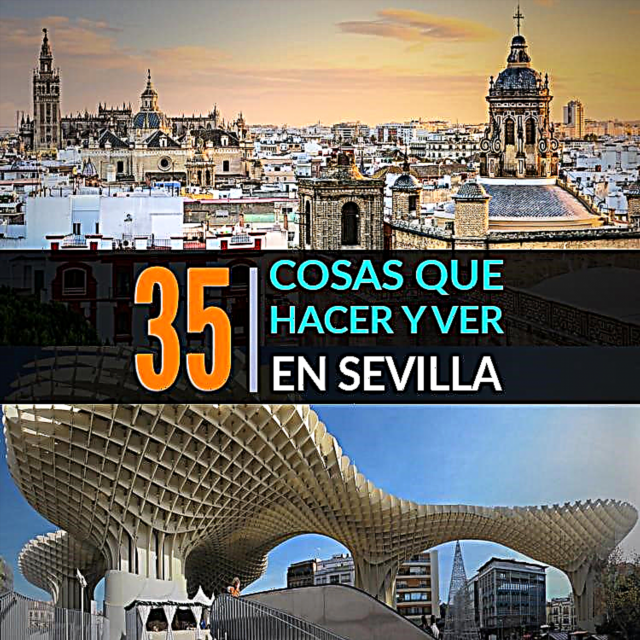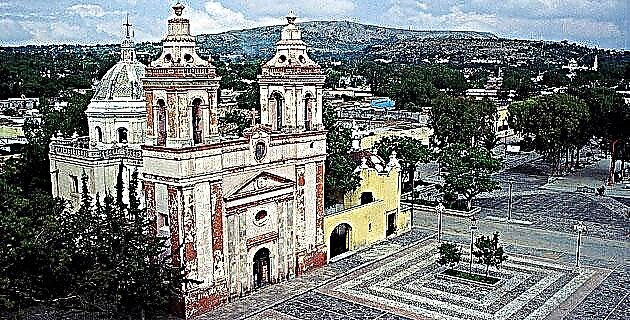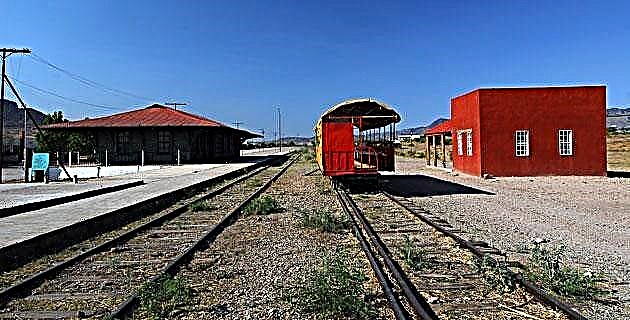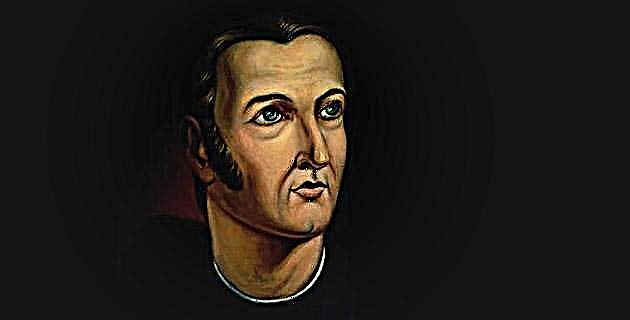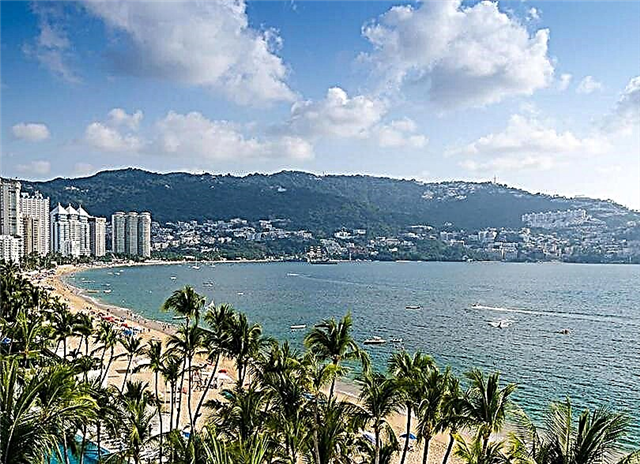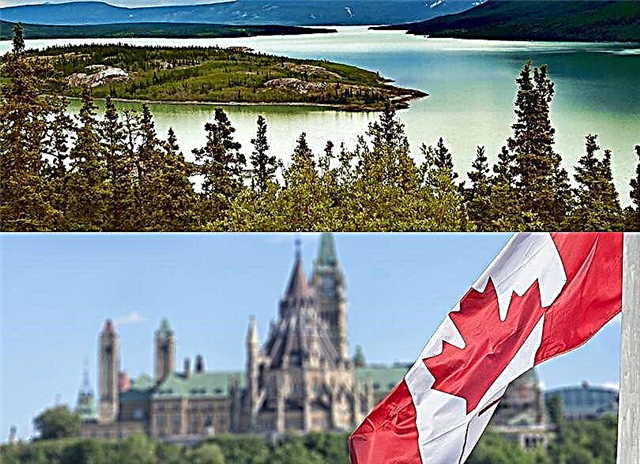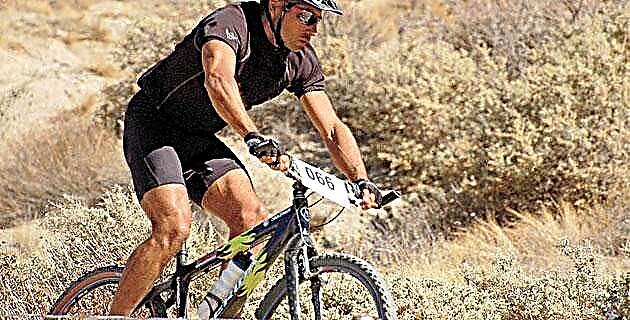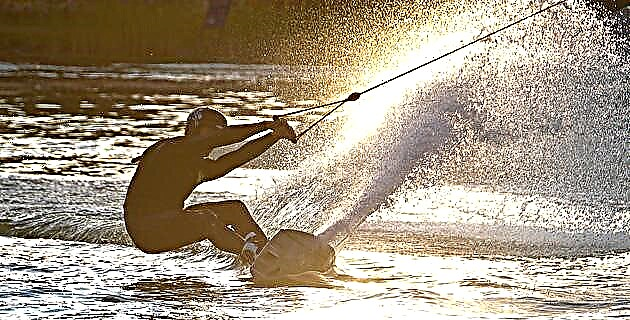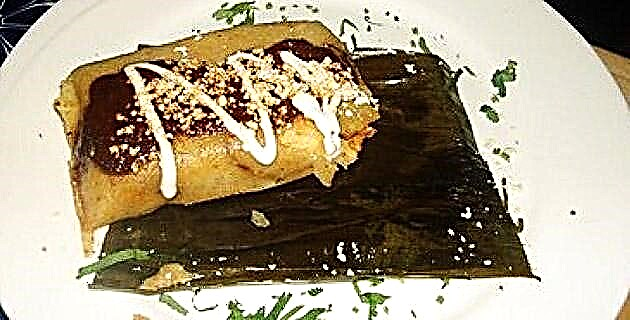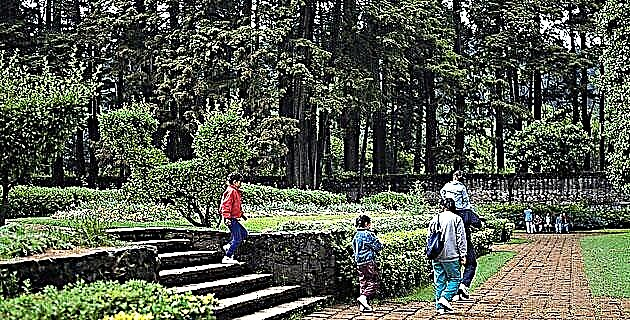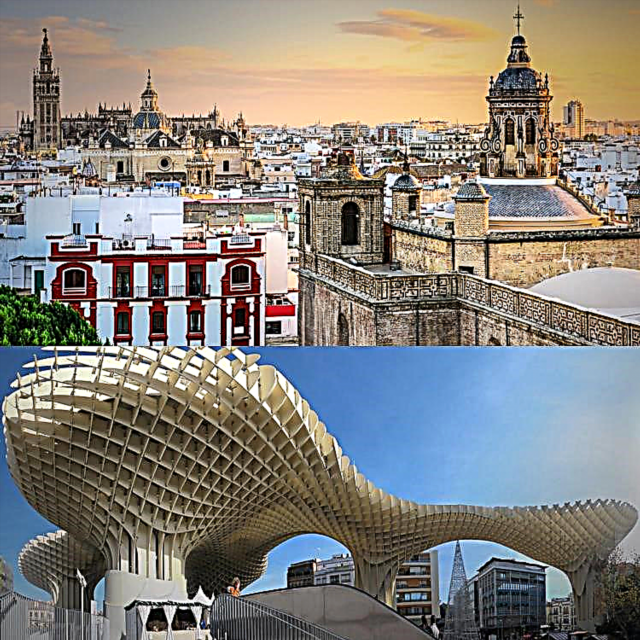The capital of Andalusia is full of history, entertainment and good food. These are 35 things you have to see and do in Seville.
1. Cathedral of Santa María de la Sede de Sevilla
Construction of the most important temple in Seville was begun in the 15th century, in the place where the Aljama Mosque was located. It is the largest Gothic cathedral in the world and houses the remains of Christopher Columbus and several Spanish kings. Its façade and doors are works of art, as well as its vaults, choir, retrochoir, chapels, organ and altarpieces. La Giralda, its bell tower, is partly Islamic construction. The old ablution courtyard of the mosque is now the famous Patio de los Naranjos.
2. Basilica of the Macarena
La Esperanza Macarena, the virgin most beloved by Sevillians, is venerated in her basilica located in the neighborhood of the same name. The image of the Virgin is a candlestick carving, by unknown author, from the early 18th or late 17th century. The neo-baroque temple dates from the mid-20th century and its ceilings are beautifully decorated with frescoes. Other spaces worthy of admiration are the Chapel of the Sentence, where Our Father Jesús de la Sentencia is worshiped, the Chapel of the Rosary and the beautiful altarpiece Altar of Hispanidad.
3. The Giralda
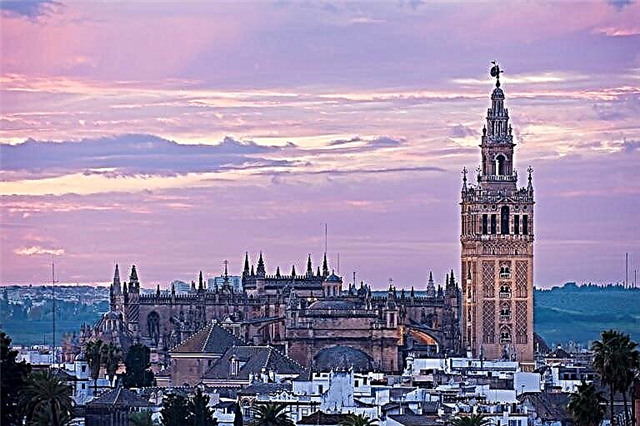
The bell tower of the Cathedral of Seville is one of the most famous architectural unions in the world between Islam and Christianity, since its two lower thirds belong to the minaret of the Aljama Mosque, while the last third was superimposed as a Christian bell tower. Its height is 97.5 meters, which rises to 101 if the extension of the Giraldillo is included, which symbolizes the victory of the Christian faith. It was for a long time the most iconic tower in Europe, serving as inspiration for others built in the rest of the world.
4. Walls of Seville
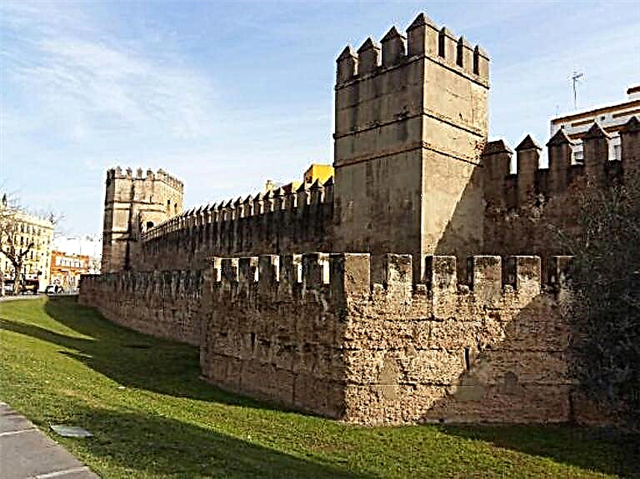
Most of the wall of Seville was destroyed in 1868 during the so-called September Revolution, losing a valuable heritage that protected the city from its Roman to modern times, through the Muslim and Visigothic. However, some sectors of the old defensive wall could be preserved, particularly the one between the Puerta de la Macarena and the Puerta de Córdoba, and the section around the Reales Alcázares.
5. Reales Alcázares
This set of palaces is a magnificent historical example of architecture, since it brings together Islamic, Mudejar and Gothic elements, with the later incorporation of Renaissance and Baroque components. The Lion Gate is the current entrance to the complex. The Mudejar Palace dates from the 14th century and among its attractions are the Patio de las Doncellas, the Royal Bedroom and the Hall of Ambassadors. In the Gothic Palace the Party Room and the Tapestry Room stand out. The gardens are splendid.
6. Indies Archive
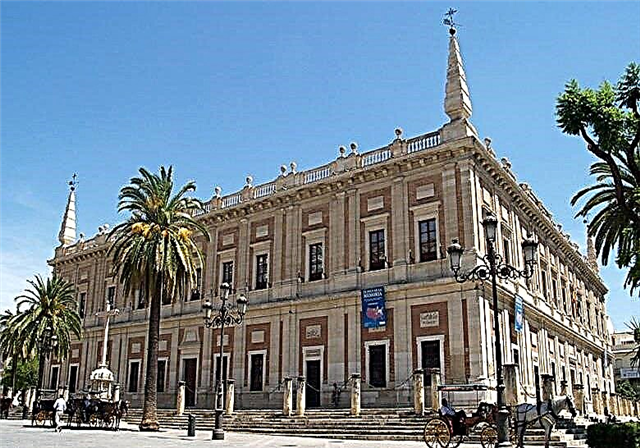
Managing the Spanish colonies in America involved a huge bureaucracy and a lot of paper. In 1785, Carlos III made the decision to centralize the archives scattered throughout Spain in Seville. The royal house chose the Casa Lonja de Mercaderes as the headquarters of the archive, a large building from the end of the 16th century. Over time, the space was enough to store 80 million pages of files, 8,000 maps and drawings, and other documents. The building has beautiful components, such as its main staircase, its roofs and its interior patio.
7. Charterhouse of Seville
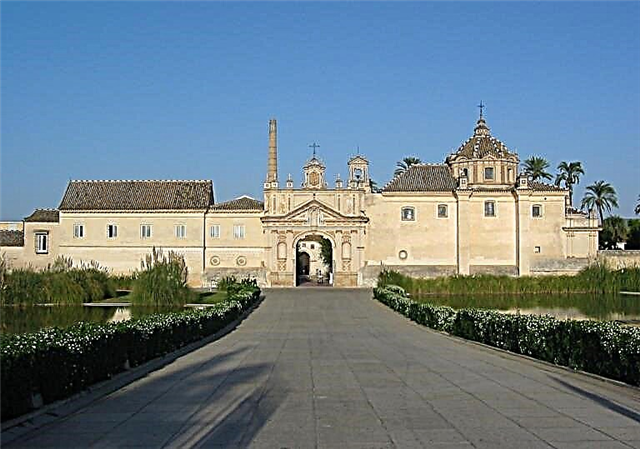
The Monastery of Santa María de las Cuevas, better known as the Cartuja, is located on the island of that name, a territory located between a living arm of the Guadalquivir River and a basin. The complex is eclectic in style, with Gothic, Mudejar, Renaissance and Baroque lines. The monastery being abandoned, the English businessman Carlos Pickman rented it to install a Faience Factory, which today constitutes one of the greatest attractions of the place. In the chapel of Santa Ana the remains of Columbus were kept for a time.
8. Maria Luisa Park
This park alternates urban and natural spaces and is the main green lung of the city. In principle, they were two estates acquired by the Duke of Montpensier in the mid-nineteenth century to make up the gardens of the Palace of San Telmo, which he had just bought to occupy with his wife María Luisa Fernanda de Borbón. The park stands out mainly for its many roundabouts and fountains, its monuments and its natural spaces, such as the Isleta de los Patos.
9. Plaza España
This architectural complex located in the María Luisa Park is another of the emblems of the city of Seville. It has an esplanade and a main building built for the Ibero-American Exposition of 1929. It is semi-elliptical in shape, to represent the embrace between Spain and Hispanic America. Its benches are true works of art, as are its sculptural pieces, which include medallions with the bust of notable Spaniards, two dozen imperial eagles and the heralds. The two towers of the building are two beautiful references in the Sevillian urban landscape.
10. Torre del Oro
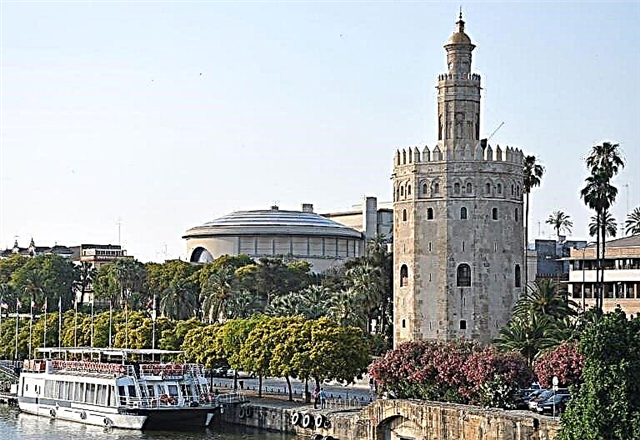
This 36-meter high albarrana tower is located on the left bank of the Guadalquivir. The first body, in a dodecagonal shape, is an Arabic work from the third decade of the 13th century. The second body, also dodecagonal, is believed to have been built in the 14th century by the Castilian king Pedro I el Cruel. The last body is cylindrical, crowned by a golden dome and dates from 1760. The allusion to gold in its name is due to the golden shine that reflects in the river water, produced by the mixture of materials used in construction.
11. Metropol Parasol
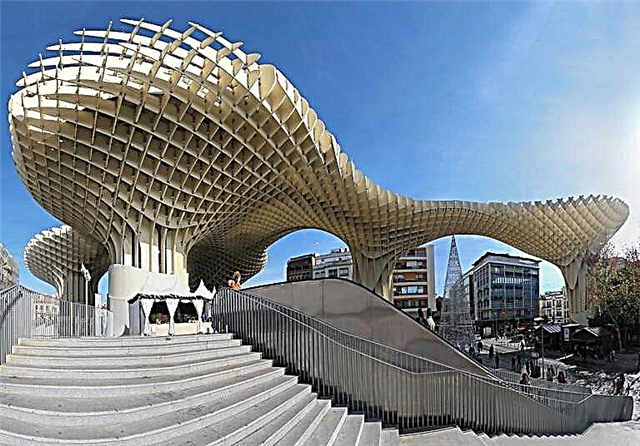
This structure popularly called Las Setas de Sevilla constitutes an avant-garde surprise in the architectural landscape of the old town of Seville. It is a kind of large wooden and concrete pergola whose components are shaped like mushrooms. It has a length of 150 meters and a height of 26, and its 6 pillars are distributed between the Plaza de la Encarnación and the Plaza Mayor. It is the work of the German architect Jurgen Mayer and in its upper part it has a terrace and a viewpoint, while on the ground floor there is a performance hall and the Antiquarium, an archaeological museum.
12. Royal Court of Seville
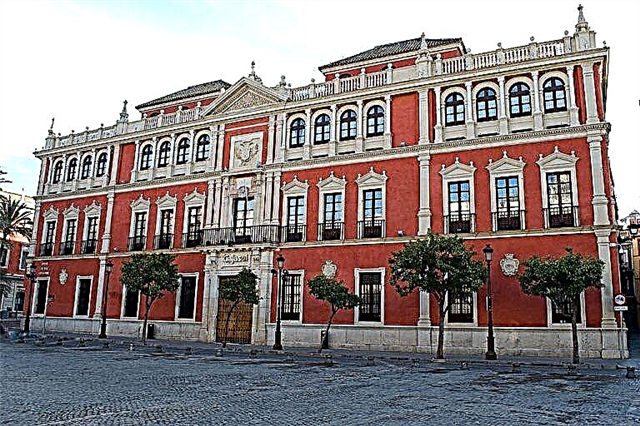
The Royal Sevillian Audience was an institution created by the crown in 1525, with judicial competence in civil and criminal matters. Its first headquarters was the Casa Cuadra and then went on to the building built at the end of the 16th century. This predominantly Renaissance building is located in the Plaza de San Francisco and contains a valuable artistic collection, owned by the Cajasol Foundation, which is based in the building. Among the works, a portrait made by Bartolomé Murillo of Archbishop Pedro de Urbina stands out.
13. Town Hall of Seville
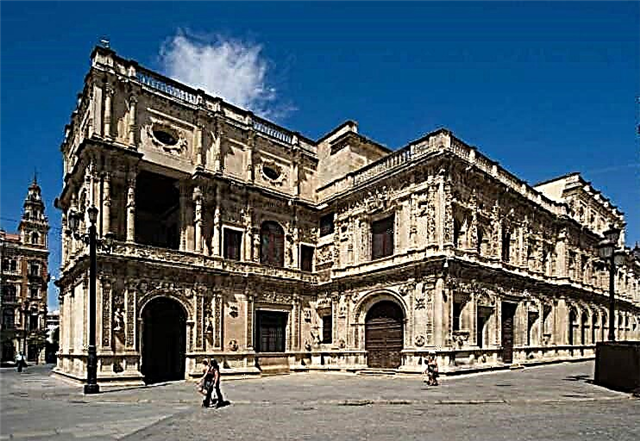
This building in the historic center is the seat of the Seville City Council. It is a majestic building from the 16th century, one of the great works in the Plateresque style in Spain. Its original main facade faces the Plaza de San Francisco and has sculptures of mythical and historical figures linked to Seville, such as Hercules, Julio César and Emperor Carlos V. The main facade towards the Plaza Nueva dates from 1867. Inside the The building stands out artistically the reliefs of the Chapter House, the main staircase and the Halt, which was the place where the horsemen descended from their mounts.
14. San Francisco Square
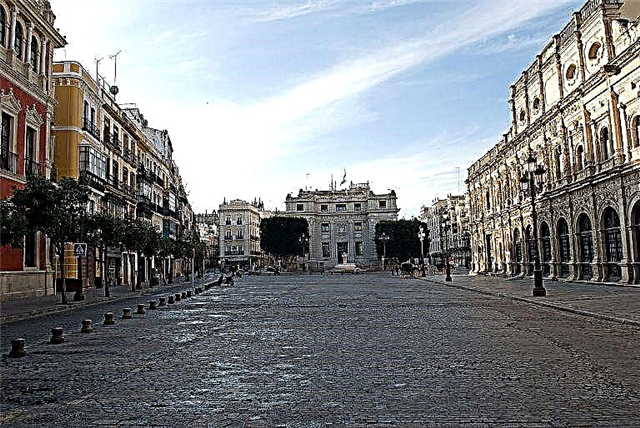
This square in the historic center of Seville became the nerve center of the city, serving as the main square. The autos-da-fé in which those convicted by the Inquisition had the opportunity to renounce their alleged sins took place publicly. It was also the scene of bullfighting, to which Seville is so closely linked. In front of this square is one of the facades of the Town Hall, which houses the city council.
15. Military History Museum of Seville
It is a museum located in Plaza España that opened its doors in 1992 and contains in its 13 rooms an impressive collection of military pieces. In the Hall of Flags, different flags and banners used by the Spanish Army throughout its history are exhibited. Likewise, artillery pieces, machine guns, arquebuses, rifles, mortars, grenades, knives, projectiles, carriages, helmets, models of military episodes and a set trench are shown.
16. Museum of Fine Arts
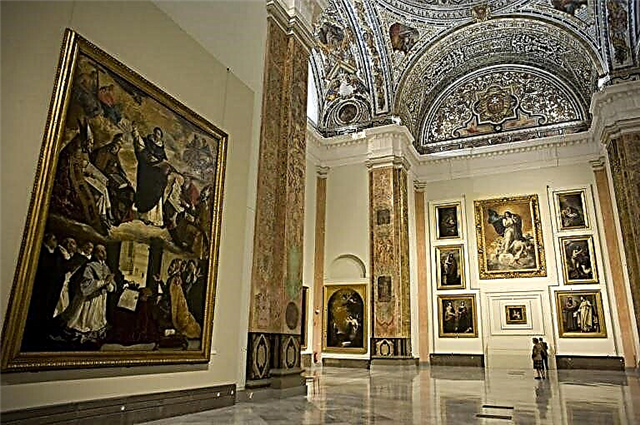
This museum located in the Plaza del Museo was inaugurated in 1841 in a 17th century building that was erected as a convent of the Order of Mercy. It has 14 rooms, among these 3 dedicated: one to the famous Sevillian painter Bartolomé Murillo and his main disciples and the other two to Zurbarán and Juan de Valdés Leal, another Sevillian. Among Zurbarán's paintings, we can highlight Saint Hugo in the Carthusian refectory Y The Apotheosis of Saint Thomas Aquinas. Of Murillo stand out Santas Justa and Rufina Y Virgin of the Napkin.
17. Museum of Popular Arts and Customs
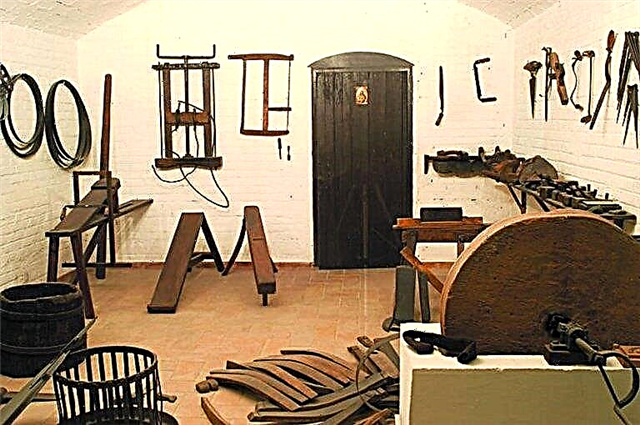
It is located in the Parque de María Luisa and opened its doors in 1973 in a neo-Mudejar building from 1914 that was the Ancient Art Pavilion of the Ibero-American Exposition of 1929. It houses collections of costumbrista painting, Sevillian tiles, earthenware, Andalusian folk costumes, tools agricultural, musical instruments, household implements, coffers and weapons, among others. It also includes the reproduction and setting of the typical Andalusian houses of the 19th century, both in the city and in the rural environment.
18. Archaeological Museum of Seville
It is another museum located in the María Luisa Park, which operates in the old Fine Arts Pavilion of the Ibero-American Exhibition in Seville. It has 27 rooms and the first ten are dedicated to the period that passed from the Paleolithic to the Iberian pottery. Others are dedicated to objects from the time of the Roman Empire in Hispania, medieval collections, and Mudejar and Gothic pieces, among the most important.
19. Municipal Newspaper Library
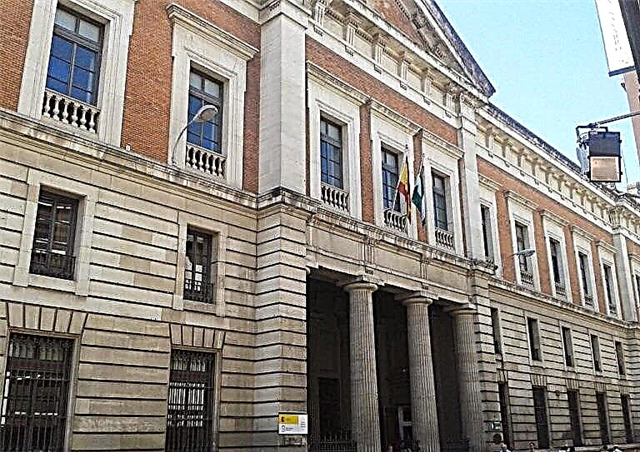
It operates in a neoclassical portico building that is part of the Historical Heritage of Spain, built at the beginning of the 20th century and restored in the 1980s. The Hemeroteca guards almost 30,000 volumes and 9,000 titles of publications, dating back to 1661, when in Seville began to edit the New Gazeta. The huge and valuable collection also includes posters and theater programs from the 19th and early 20th centuries.
20. Hotel Alfonso XIII
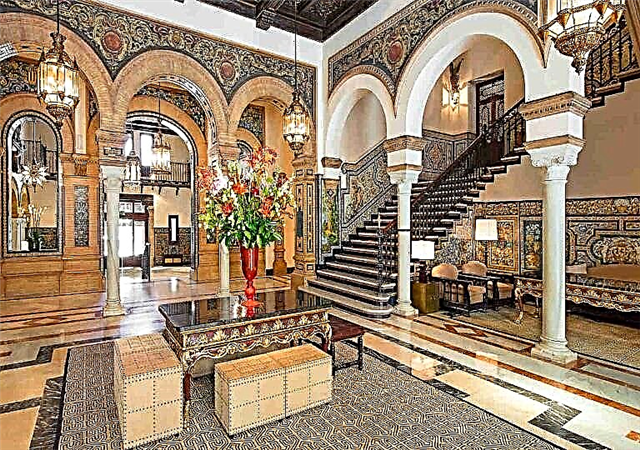
This hotel operates in a historic building erected for the Ibero-American Exposition of 1929. Alfonso XIII was interested in its construction details and attended with Queen Victoria Eugenia the inaugural banquet held in 1928. It is listed as one of the most sumptuous hotels in Europe, highlighting the noble wood furniture, the Bohemian crystal lamps and the rugs from the Royal Tapestry Factory. It is owned by the City Council and operated by a concessionaire.
21. Palace of the Dueñas
This mansion is owned by the Casa de Alba and the famous Duchess Cayetana Fitz-James Stuart died there in 2014. In 1875 the poet Antonio Machado was born in the same place, when the palace offered houses for rent. The building dates from the 15th century and has Gothic-Mudejar and Renaissance lines. It has a splendid chapel and cozy gardens and a watering hole. Its art collection is made up of more than 1,400 pieces, including paintings, sculptures, furniture and other objects, including the Christ crowned with thornsby José de Ribera.
22. Palace of San Telmo
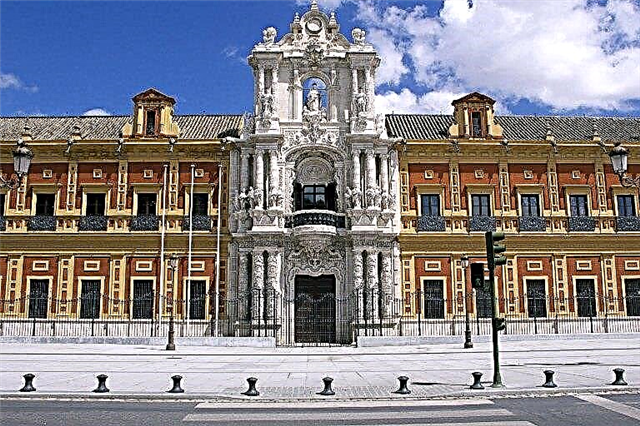
This baroque building in which the Presidency of the Junta de Andalucía is based, dates from 1682 and was built on a property owned by the Court of the Inquisition, to house the University of Mercaderes. Its main façade is in the Churrigueresque style and a balcony with twelve figures of women stands out on it, symbolizing science and the arts. On the side façade that faces Palos de la Frontera street, is the gallery of the twelve illustrious Sevillians, historical figures in different fields born or deceased in the city. Inside the palace, the Hall of Mirrors stands out.
23. Palace of the Countess of Lebrija
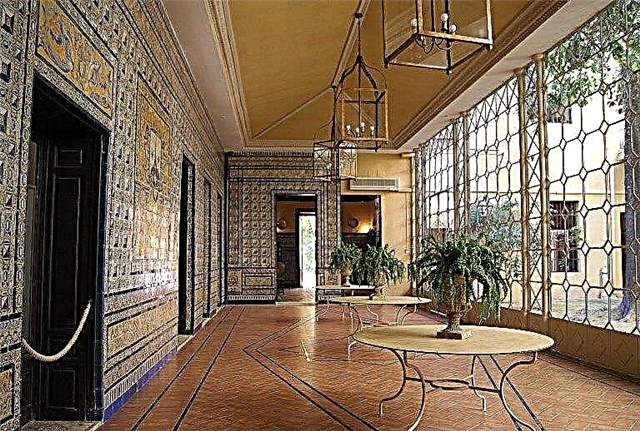
It is a 16th century building in which the Renaissance style predominates and stands out for its extraordinary collection of mosaics used in the pavements, which is why it is classified as the best paved palace in Europe. The art collection includes oil paintings by Bruegel and Van Dick, and other valuable pieces are their amphoras, columns, busts and sculptures.
24. Teatro de la Maestranza
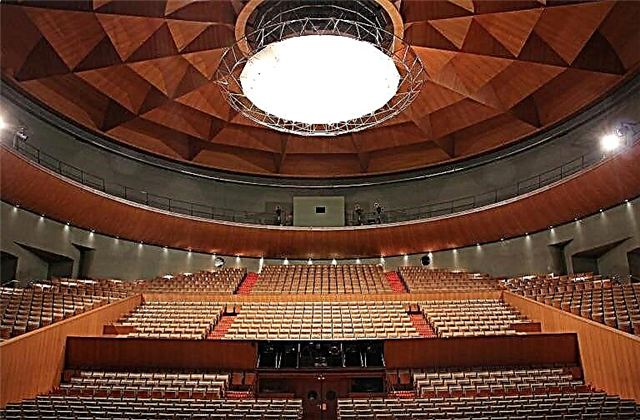
If you want to attend the opera or a classical or flamenco concert in Seville, this is the best setting. The Teatro de la Maestranza is a building that is part of the architectural trend of functionalism and was opened in 1991. It has variable acoustics, so it can represent genres that would be incompatible in a traditional room. Its central hall is cylindrical in shape, with a capacity to accommodate 1,800 spectators. The Royal Symphony Orchestra of Seville is based there.
25. Athenaeum of Seville
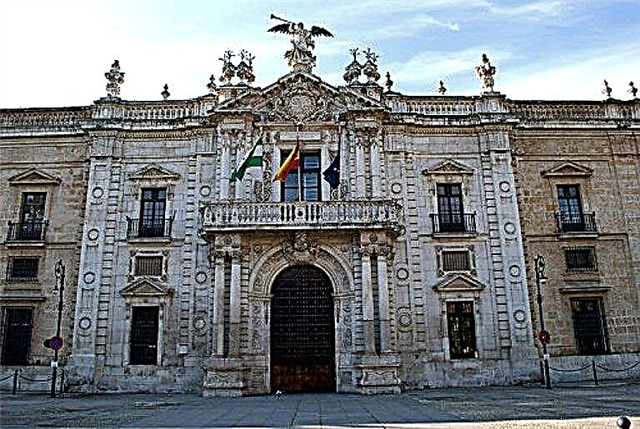
It is a great cultural center of Seville since the 19th century. The institution was founded in 1887 and has passed through various locations until 1999 when it was installed in the current sober building on Orfila Street. It has a splendid interior patio and its illustrious membership includes great figures from Sevillian and Spanish culture, such as Juan Ramón Jiménez (1956 Nobel Prize Winner for Literature), Federico García Lorca and Rafael Alberti. A tradition started by the Athenaeum in 1918 is the well-attended Three Kings Parade.
26. Hospital of the Five Wounds
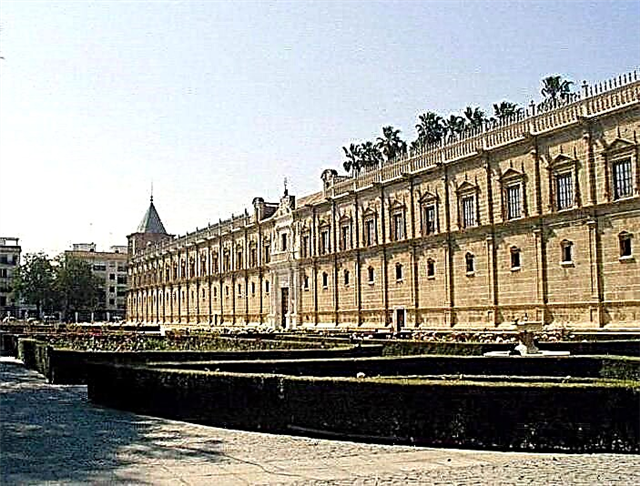
At the beginning of the 16th century, the Andalusian noblewoman Catalina de Ribera promoted the construction of a hospital to welcome homeless women. The hospital began in its old headquarters until it was moved to the majestic Renaissance building that was a health center until 1972. In 1992 it became the seat of the Parliament of Andalusia. Its main portal is Mannerist lines and has a beautiful church and large gardens and interior spaces.
27. Royal Tobacco Factory
Europeans would have to regret that the Spanish discovered tobacco in America and brought the first plants to the Old Continent. Seville held the monopoly on the commercialization of tobacco and the Royal Tobacco Factory was built in the city in 1770, the first in Europe. The building is a beautiful sample of baroque and neoclassical industrial architecture. The factory closed in the early 1950s and the building became the main headquarters of the University of Seville.
28. Church of San Luis de los Franceses
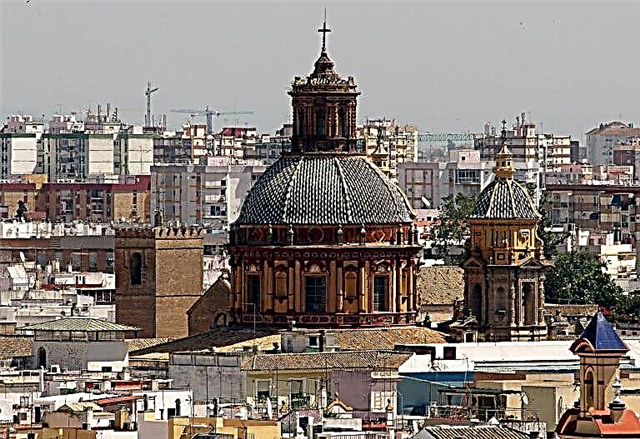
It is a spectacular sample of the Baroque in Seville. It was built in the 18th century by the Society of Jesus and its central dome is one of the largest in Seville, standing out for its external and internal artistic elements. The interior of the temple is overwhelming due to its beautiful and neat decoration, highlighting the main altarpiece and the 6 sides dedicated to famous Jesuits such as San Ignacio de Loyola, San Francisco Javier and San Francisco de Borja.
29. Pilate's House
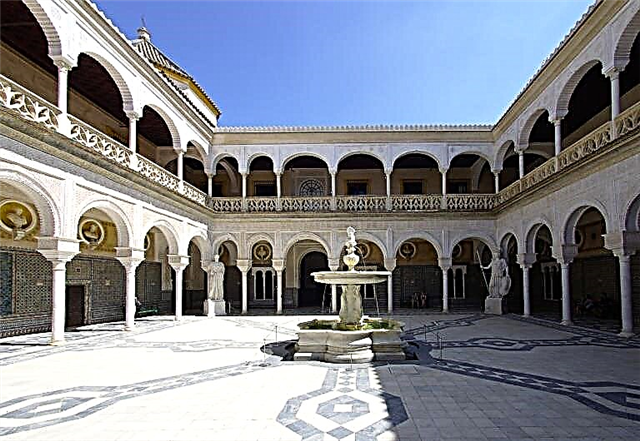
The building that best symbolizes the Andalusian palace was another initiative by Catalina de Ribera at the end of the 15th century. It mixes the Renaissance style with the Mudejar and its name is an allusion to Pontius Pilate for a Via Crucis that began to be celebrated in 1520, which started from the chapel of the house. Its ceilings are decorated with frescoes by the Sanlúcar painter Francisco Pacheco and in one of its rooms there is a small painting on copper by Goya, belonging to the famous series Bullfighting.
30. Seville Aquarium
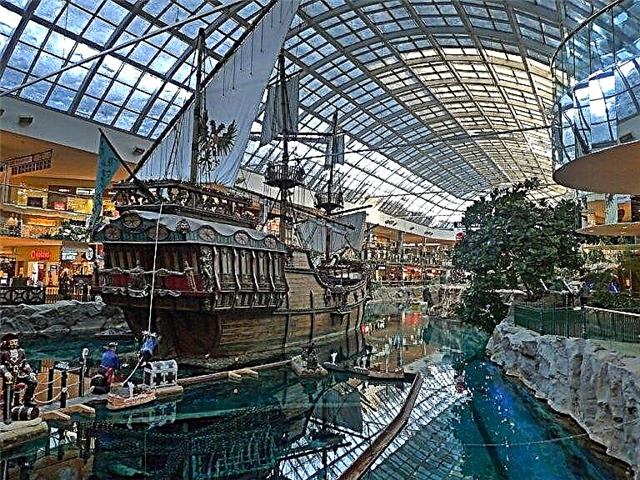
On August 10, 1519, Fernando de Magallanes and Juan Sebastián Elcano left the Muelle de las Mulas in Seville in what would be the first round the world. The Seville Aquarium, inaugurated in 2014 at the Muelle de las Delicias, arranged its contents according to the route traced by the famous navigators. It has 35 ponds through which some 400 different species swim and is an ideal place to change the environment in the city of Seville.
31. Holy Week in Seville
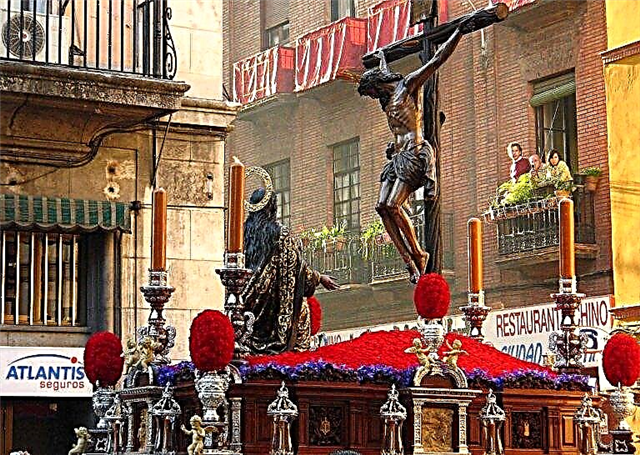
There is no place in the world where the celebration of the Semana Mayor is more impressive. Its massive processions amid the religious fervor made it an event of International Tourist Interest. The images strolled through the streets are the work of great sculptors. The processions march to the sound of sacred music with the members of the bands dressed in traditional costumes.
32. Ramón Sánchez-Pizjuán Stadium
The city's two great soccer rivals, Sevilla FC and Real Betis, played their first game at this stadium more than half a century ago. It is named after the Sevillian businessman who presided over Sevilla FC for 17 years, the team that owns the stadium, which has a capacity for 42,500 fans. The club has given the people of Seville great joy, especially lately, with three consecutive titles in the UEFA Europa League between 2014 and 2016. The Betis say their chance will come soon.
33. Seville bullring
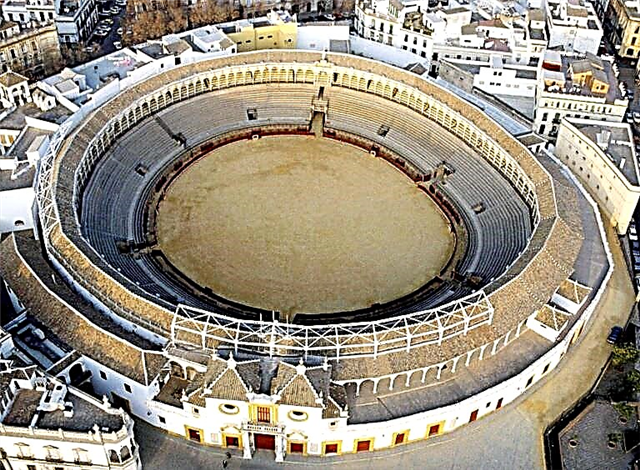
The Real Maestranza de Caballería de Sevilla, also called La Catedral del Toreo, is one of the most famous arenas in the world for the brave festival. Its beautiful baroque building dates from the end of the 19th century, it was the first square with circular sand and it has capacity for 13,000 fans. It has a Bullfighting Museum and outside there are statues of the great Sevillian bullfighters, led by Curro Romero. The largest poster is presented during the April Fair, the largest festival in Andalusia.
34. An Andalusian gazpacho, please!
After visiting so many historical sites, museums and Sevillian sports venues, it was time to eat something. Nothing better than starting with a dish that has made a career out of Andalusia and Spain. Andalusian gazpacho is a cold soup that has a lot of tomato, as well as olive oil and other ingredients, and it is an excellent selection, especially in the middle of the hot Seville summer.
35. Let's go to the flamenco tablao!
You can't leave Seville without going to a flamenco tablao. The show characterized by its fast guitar music, cante and the intense tapping of dancers dressed in typical clothes, was declared Intangible Cultural Heritage of Humanity by the UN. Seville has many places to enjoy an unforgettable time watching its most traditional representation.
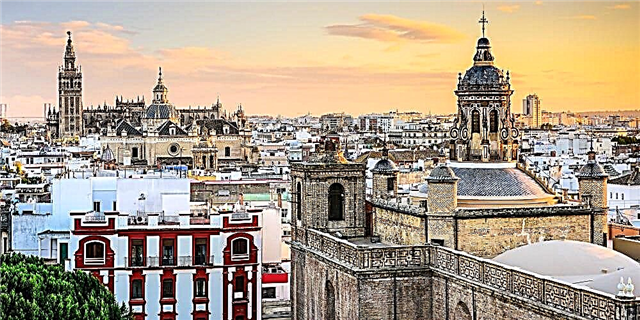
Did you enjoy the historical sites of Seville and its festivals, traditions and culinary art? Finally, we only ask you to leave us a brief comment with your impressions. Until next time!